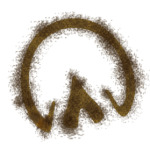How about this crazy weather we’ve been having? I’ve been busy climbing the mountains of snow that have formed in my paddock…the other day my owner couldn’t find me because I was behind a snow pile that towered over my head! Check out some of my snow filled pictures in my photo gallery below! I just can’t wait for spring to come!
Anyway, Valentine’s Day is coming up and love is in the air! I’m looking forward to a romantic day with my gal pal and fellow snow mountain climber HugMe Christi. I’m so in love, that when I see her, my ears perk up, my eyes light up, and my heart starts to beat just a little bit faster! Horses are lovers…we have big hearts! The average weight of an equine heart is between 7 and 9 pounds, but some are even bigger than that…the famous racehorse Secretariat’s heart was an estimated 22 pounds! So how does the massive equine heart work?A horse’s heart is located in the anterior region of the chest cavity, in the area between the forelimbs. The heart is a 4-chambered, muscular, hollow-organ that is divided into right and left sides by a wall-like structure called a septum. The upper chamber on each side, called the atrium, functions to receive blood. This is connected to the larger, more powerful lower chamber, or ventricle, which ejects the blood. When a heart contracts, the chambers become smaller, forcing blood out of the atria into the ventricles. From there, blood is ejected from each ventricle and into a large blood vessel at the top of the heart. One of these vessels, called the pulmonary artery, takes blood into the lungs to receive oxygen. The other, the aorta, transports freshly oxygenated blood to the rest of the body. The aorta branches into a complex network of arteries, arterioles, and capillaries to deliver the oxygenated blood to the organs and tissues which keep horses running!
Speaking of running, here at the Rutgers Equine Science Center, we do a lot of research on how a horse’s heart functions while it’s doing a high energy task such as working on a treadmill. We use special equipment called an electrocardiogram (ECG for short) which uses the electrical impulses of the heart to provide visual signals for researchers to record data and make observations. When exercising, a horse’s heart can go from the average resting rate of 30 to 40 beats per minute to as much as over 200 beats per minute!
Horses need big hearts to pump blood to muscles and organs which enable us to perform in everything we do, from racing to grazing! The only girl my heart beats for is Christi…I have a candlelit dinner of warm bran mash with a side of alfalfa planned for us! I can only hope she remembers to bring cookies and cupcakes for dessert to satisfy my sweet tooth!
Until next time friends,



Comments (4)
Anonymous
Feb 14, 2011
Anonymous
Feb 14, 2011
Lord Nelson
Feb 14, 2011
Lord Nelson
Feb 14, 2011